The views expressed in our content reflect individual perspectives and do not represent the authoritative views of the Baha'i Faith.
In August of 1945 an atomic bomb crushed the city of Hiroshima, Japan, and the impact instantly incinerated 80,000 inhabitants, leaving tremendous devastation behind.
Sadako Sasaki was only two. Still alive after the explosion, because she was two kilometers away from ground zero, she led a relatively normal life until the age of 12.

Then one day, after a relay race Sadako had helped her team win, she suffered from extreme tiredness and dizziness. The symptoms continued to recur, so her parents took her to the Red Cross Hospital to find out what was happening to their daughter. She had leukemia, also known as “A-bomb disease.” Everyone who knew Sadako was in shock. She was terrified, knowing that almost everyone who got this disease faced certain death. She cried and cried. All she wanted was to go back to school, but she couldn’t; she had to stay in the hospital.
When we think of the horrific impact of wars on humanity, we often count the numbers of casualties or the economic devastation they cause. We rarely imagine the impact on one lone survivor, but the Baha’i teachings emphasize how enormous and terrible that impact can be:
… war is destruction while universal peace is construction; war is death while peace is life; war is rapacity and bloodthirstiness while peace is beneficence and humaneness; war is an appurtenance of the world of nature while peace is of the foundation of the religion of God; war is darkness upon darkness while peace is heavenly light; war is the destroyer of the edifice of mankind while peace is the everlasting life of the world of humanity; war is like a devouring wolf while peace is like the angels of heaven; war is the struggle for existence while peace is mutual aid and co-operation among the peoples of the world and the cause of the good-pleasure of the True One in the heavenly realm.
There is not one soul whose conscience does not testify that in this day there is no more important matter in the world than that of universal peace. – Abdu’l-Baha, Selections from the Writings of Abdu’l-Baha, pp. 296-297.
One day Sadako’s best friend Chizuko paid her a visit and brought some folding paper for origami. With tears rolling down her cheeks and holding Sadako’s hand, she explained a legend. According to tradition, the crane, a sacred bird in Japan, lived for a hundred years, and if a sick person folds one thousand paper cranes, then that person would soon get well. After hearing the legend, Sadako wiped away the tears and her face lit up with a faint smile, one she hadn’t mustered for days. With a nod, she determined to fold one thousand cranes in the hope that she would get well again.
Sadako’s family and friends worried so much that many of them sat beside her as encouragement for the sick girl to fold cranes. After the 500th crane, she felt so much better that the doctors allowed her to go home for a short while. Unfortunately, the tiredness and dizziness returned after only a few days, and she had to return to the hospital.
Despite the pain, she was determined to finish folding a thousand cranes. In her hospital bed, Sadako cheerfully folded origami into cranes daily. With each passing day, the task became more difficult. Her energy diminished until, one day, she went to sleep and did not wake up again. She had folded 644 paper cranes.
Her family and classmates were heartbroken over their loss. They decided to form a club to honor her courage. Word spread fast. Students from 3,100 schools and nine different countries raised funds. On May 5, 1958, almost three years after Sadako’s passing, a great monument, known as the Children’s Peace Monument, was dedicated at the Hiroshima Peace Park, exactly at the spot where the horrendous atomic bomb had detonated.
Among those attending the ceremony were many of the children who helped Sadako during her ordeal at the hospital and who raised money to immortalize the spirit of a brave girl who had succumbed to illness caused by nuclear fallout. The front of the monument was inscribed with the words “A Thousand Paper Cranes,” and the words “Peace on Earth and in Heaven” were engraved on the back.
To this day, children from all over the world still send folded paper to be placed beneath Sadako’s statue with a wish: “This is our cry; this is our prayer: Peace in the world.”
Sadako’s story touched me, too. She wanted to live a full life, like we all do, but war took away that possibility. Her history reminds me of the millions of children like her subjected to misery in Syria, Sudan, Yemen, and many other parts of the world right now.
Baha’is believe in the oneness of humanity, and one facet of that oneness calls for empathy and compassion towards those members of the human family who face difficulty, even though we may never see them. I believe billions of people, based on my research on philanthropic deeds, share my sentiments.
In memory of Sadako and millions like her, I decided to write one thousand blogs to promote peace, harmony, and prosperity on Earth. Given that I can only write twenty-five pieces a year, it will take me forty years to accomplish this goal. At the age of seventy, I might have another ten years of writing capacity left in me. If you do the math, I probably don’t have enough productive years left in me to achieve that goal, so I am asking for your help. I invite you to write blogs related to oneness and peace, and help make the world a place free of war.
My hope: that together we can fulfill Abdu’l-Baha’s wish expressed in these precious words from the Baha’i teachings:
You must manifest complete love and affection toward all mankind. Do not exalt yourselves above others, but consider all as your equals, recognizing them as the servants of one God. Know that God is compassionate toward all; therefore, love all from the depths of your hearts, prefer all religionists before yourselves, be filled with love for every race, and be kind toward the people of all nationalities. Never speak disparagingly of others, but praise without distinction. Pollute not your tongues by speaking evil of another. Recognize your enemies as friends, and consider those who wish you evil as the wishers of good. You must not see evil as evil and then compromise with your opinion, for to treat in a smooth, kindly way one whom you consider evil or an enemy is hypocrisy, and this is not worthy or allowable. You must consider your enemies as your friends, look upon your evil-wishers as your well-wishers and treat them accordingly. Act in such a way that your heart may be free from hatred. Let not your heart be offended with anyone. If some one commits an error and wrong toward you, you must instantly forgive him. Do not complain of others. Refrain from reprimanding them, and if you wish to give admonition or advice, let it be offered in such a way that it will not burden the bearer. Turn all your thoughts toward bringing joy to hearts. Beware! Beware! lest ye offend any heart. Assist the world of humanity as much as possible. Be the source of consolation to every sad one, assist every weak one, be helpful to every indigent one, care for every sick one, be the cause of glorification to every lowly one, and shelter those who are overshadowed by fear. – Abdu’l-Baha, The Promulgation of Universal Peace, p. 453.




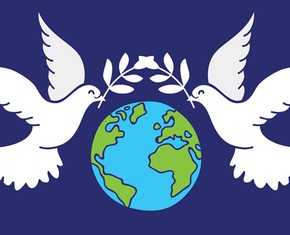
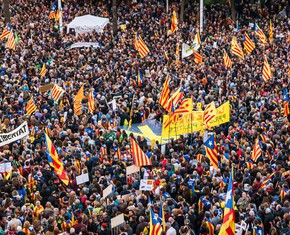

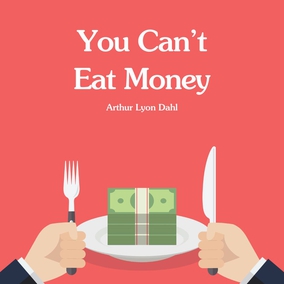
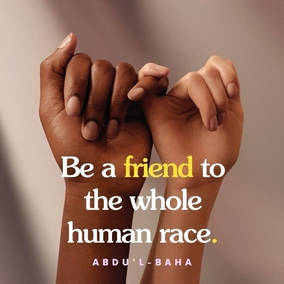
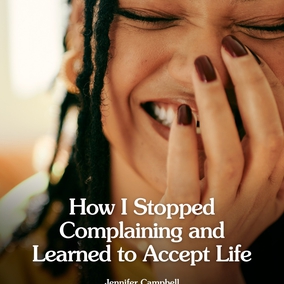
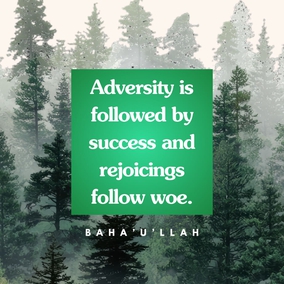
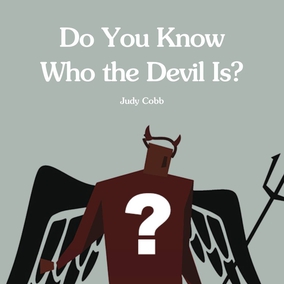
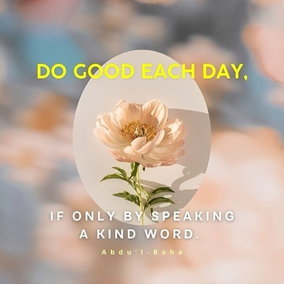

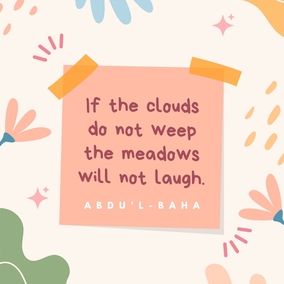

Comments
Sign in or create an account
Continue with Googleor